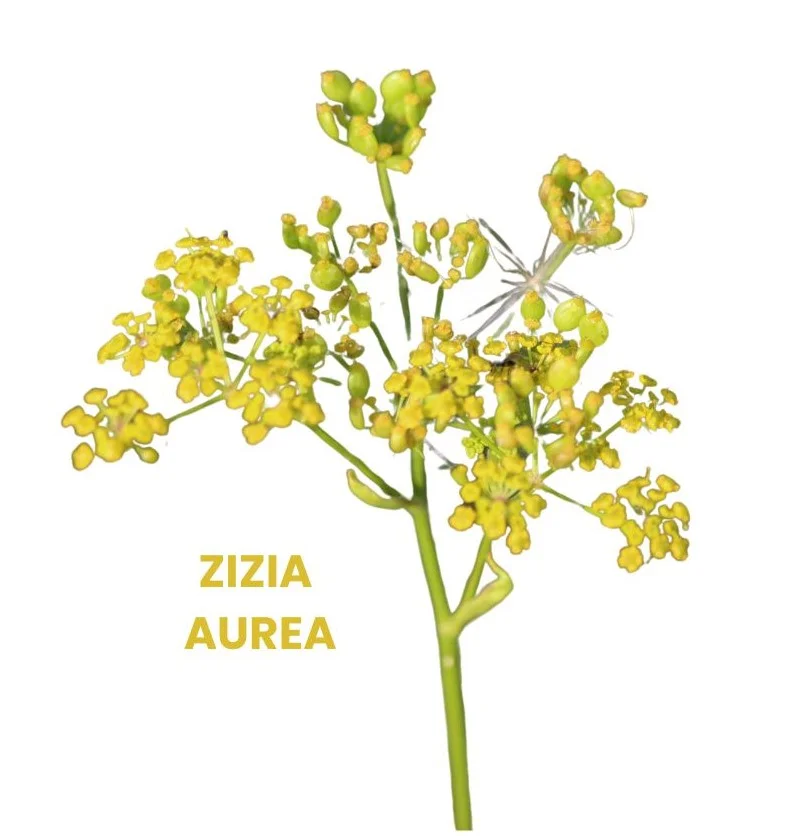Zizia aurea, commonly known as Meadow Parsnip, is a medicinal plant belonging to the Thapsiaceae family.
It is native to North America and has been traditionally used as a herbal remedy for various conditions, particularly those related to the nervous system.

Table of Contents
ToggleSOURCE INFORMATION
Scientific Classification
- Kingdom: Plantae
- Family: Apiaceae
- Genus: Zizia
- Species: Zizia aurea
Origin
- Zizia aurea, commonly known as Meadow Parsnip or Golden Alexanders, is native to North America.
- It can be found in various habitats including meadows, prairies, open woods, and along stream banks.
- The plant is particularly prevalent in the eastern and central regions of North America, from Canada to the United States.
Historical Facts
- Zizia aurea has a rich history of traditional medicinal use by Native American tribes.
- Indigenous peoples, such as the Cherokee, Iroquois, and Algonquin, utilized various parts of the plant for medicinal purposes.
- The plant was traditionally used to treat a range of ailments, including digestive issues, nervous disorders, and women’s health conditions.
- Additionally, Zizia aurea was valued for its edible qualities, with the young shoots and leaves being consumed as a nutritious spring vegetable.
- In botanical terms, Zizia aurea has also been appreciated for its ornamental value, with its golden-yellow flowers adding color to meadows and gardens.
DRUG PATHOGENESIS
Zizia aurea acts primarily on the nervous system, exhibiting effects on mental health and neurological conditions.
It is known to alleviate symptoms of hysteria, epilepsy, chorea, and hypochondriasis.
KEY CHARACTERISTICS
- Suicidal tendencies accompanied by alternating moods of laughter and weeping.
- Head symptoms include pressure on the top and in the right temple, often associated with backache.
- Increased sexual power in males, with great lassitude following coitus.
- Female symptoms include intermittent neuralgia of the left ovary and acrid, profuse leucorrhoea, often with delayed menses.
- Respiratory symptoms include a dry cough with stitches in the chest and dyspnoea.
- Extremity symptoms include unusual tiredness, chorea (especially during sleep), fidgety legs, lameness in arms, and spasmodic twitching.
MODALITIES
- Symptoms worsen during sleep.
RELATIONSHIP WITH OTHER DRUGS
- Zizia aurea can be compared to other remedies such as Agaricus, Stramonium, Tarentula, Cicuta, and Aethusa, especially in terms of its effects on the nervous system and mental health.
DOSE
- The recommended dosage ranges from tincture to third potency.
Frequently Asked Questions (FAQs)
What are the key symptoms of Zizia aurea?
- Key symptoms include alternating moods of laughter and weeping, suicidal tendencies, pressure in the head with associated backache, increased sexual power in males, and neuralgia of the left ovary in females.
What conditions can Zizia aurea be used for?
- Zizia aurea is beneficial for hysteria, epilepsy, chorea, hypochondriasis, and other nervous system-related conditions.
Meaning of Difficult Words
- Hysteria: A psychological disorder characterized by emotional outbursts and irrational behavior.
- Epilepsy: A neurological disorder marked by recurrent seizures or convulsions.
- Chorea: Involuntary, irregular movements of the limbs or facial muscles.
- Hypochondriasis: Excessive preoccupation or anxiety about one’s health, often with unfounded fears of having a serious disease.
